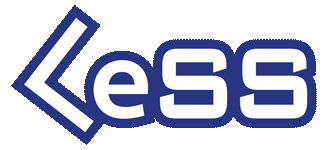LeSS in Action: Developer Practices
Japan
Description :
■ 概要
5日間の開発実践トレーニングでは、実際にユーザーに利用されている既存製品の上で、ユーザーに受け入れられる機能をチームで同時に開発し、提供するSprintを実施します。 参加者は50%以上の時間をプロジェクトに費やすことになります。 また、Specification by Examples、TDD、Continuous Integration(CI)、Continuous Delivery(CD)などの技術的プラクティスや、スクラムチームへの協力的アプローチ、コード共有、Definition of Doneなどの組織的なスキルについても学習します。
参加者は「CSD(Certified Scrum Developer℠)」・「Certified LeSS Basics」の資格を取得することができます。
※ 本コースでは、事前に資格を保持している必要はありません。
※ 今年度はA-CSD(Advanced Certified Scrum Developer℠)は含まれません。
本コースはオンサイトにて行います。
アクティビティやディスカッションを含め、全て日本語で行われます。英語に自信のない方も安心してご参加いただけます。
Agenda :
Monday:
- Requirement workshop / A-TDD
- Definition of Done
- Cucumber and Friends
- Sprint Plannings
Tuesday:
- Test-Driven Development
- Collaboration (Working in teams, SCM, Build Automation and other tools, Pair Programming, Continuous Integration and CI Systems, Collective Code Ownership)
Wednesday:
- Code Smells & Refactoring
- Thinking about test and test automation (Testing Pyramid, Mocking, Unit testing in other languages: JavaScript, Python, etc., Good Unit Testing
Thursday:
- Thinking about Design
- Feature Team Revisit
Friday:
- Working with Legacy Code
- Craftsmanship
- Retrospective
Details :
Product Backlog Refinement Workshop
In Large-Scale Scrum, the PBR workshop is one of the most critical activities. By doing the workshop in the sprint with multiple teams, we will cover the three essential aspects of this workshop: splitting big items, detailing the items, and estimating. Some optional techniques we might cover based on the situation include: impact mapping, storying mapping, specification by example, estimation ceremonies, etc.
Definition of Done
What is the purpose of the Definition of Done? We will also talk about what it is about, how to use it, and who should ensure it.
Sprint Plannings
(Cross-team) Sprint Planning Part One is mainly covered by the PBR workshop since there's only one sprint. Sprint Planning Part Two will be explained and practiced in detail.
Acceptance Test-Driven Development with Cucumber and Friends
This part explains how to drive the iteration with the examples derived from the PBR workshop. We will discuss the detailed technical approaches, good practices, and conventions.
The actual teaching or lecture is usually delayed to the next couple of days until the participants have real experience struggling with the tools and process. Most of the learning should be from the practices and on-time coaching from the course instructors. Same as all the other technical practices
Test-Driven Development
From day 2, all the code needs to be written by TDD. Same as described above, We will explain the philosophy very quickly with a simple exercise. Most of the learning should come from hands-on coaching and practicing.
Collaboration
This part explains the fundamental techniques and practices that enable teams to collaborate in a Large-Scale Scrum situation. Including:
- Working in teams
- SCM, Build Automation, and other tools
- Pair Programming
- Continuous Integration and CI Systems
- Collective Code Ownership
The above is getting the participant ready to understand why things are happening in the way they are in Large-Scale Scrum.
Code Refactoring
This part covers the why, what, and how of code refactoring. We'll train people to have the nose to smell bad code and the techniques to remove the bad smells.
More on Test Automation
With both the automated acceptance test and unit test covered in the course, in this part, we go deeper into (automated) testing. Including:
- Real testing/exploratory testing
- Product-wise testing strategies
- Good automated testing
- Unit testing other programming languages
Thinking about Design
Here we discuss the difference between emergent design and the traditional design style that often happens in a waterfall process.
On top of that, we also talk about the design principles and paradigms.
Thinking about "real testing", again
Feature Teams
With all gained knowledge from the first four days, we will finally explore this organizational structure topic again and see the links between the technical practices and team approaching and feature teams.
Legacy Code
Based on the book by Michael Feathers, Working Effectively With Legacy Code, we discuss the way of working when the code is without good test coverage, and the knowledge about how the code works is lost.
Craftsmanship
We will discuss the alternative metaphor for software practitioners to map their careers and guide them.
Retrospectives
The training is over, the teams created in the course won't continue (usually). We will try to give people an experience of a good retrospective, learn to identify bad smells in a retrospective, and learn good techniques for running a retrospective. We will also cover how large organizations do retrospectives.
It's hard to document what we do in the course precisely. Because every time the teams will be working on different product backlog items and continue the product left by the previous class, many contents will be emergent.
Price: 550,000 JPY
